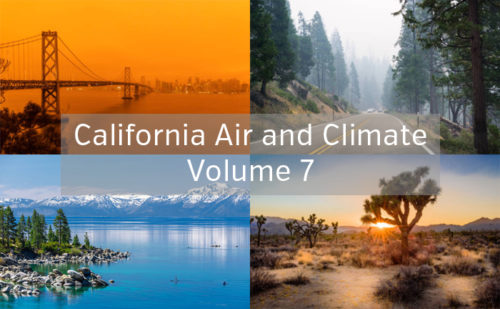California Air and Climate: Greenhouse Gas Emissions Targets for Ride-Hailing Companies; USEPA’s Alleged Failure to Recognize Battery Storage as Best Available Control Technology; CARB Adopts Particulate Matter Standards
March 2019
California Air and Climate, Vol. 7
California Targets Greenhouse Gas Emissions from Ride-Hailing Companies
At a February 22, 2019 workshop, the California Air Resources Board (“CARB”) unveiled its planned “Clean Miles Standard” that will require ride-hailing firms, such as Lyft and Uber, to reduce greenhouse gas emissions from their contractor operated fleets. Under the first phase of the Clean Miles Standard, mandated by SB 1014 (2018), CARB will develop a per-passenger, per-mile greenhouse gas emission baseline. By 2021, CARB will adopt annual targets for the ride-hailing companies to reduce emissions below the baseline. CARB is exploring a variety of avenues to achieve reductions including increased use of zero-emission vehicles and charging infrastructure, car-pooling, and the support of public transit. The California Public Utilities Commission, which regulates for-hire transportation on public roads, will adopt rules to implement CARB’s standards.
Environmental Groups Challenge USEPA’s Alleged Failure to Recognize Battery Storage as Best Available Control Technology
On February 8, 2019, several environmental groups petitioned the United States Court of Appeals for the Ninth Circuit to challenge the United States Environmental Protection Agency’s (“USEPA”) alleged failure to recognize battery storage as best available control technology (“BACT”) under the Clean Air Act (“CAA”) to reduce emissions at a gas-fired power plant in Palmdale, California. On October 23, 2018, USEPA’s Environmental Appeals Board (“EAB”) rejected the groups’ initial administrative challenge to the facility’s prevention of significant deterioration (“PSD”). In that action, the groups argued that battery storage could replace the use of duct burners as BACT. In general, duct burners boost total heat input to steam generators, which produce electricity. The EAB held that the groups failed to demonstrate that USEPA’s permitting decision was clearly erroneous, in part because they failed to demonstrate that battery storage was a technically feasible alternative to the use of duct burners, including during periods other than peak demand. Shortly after the EAB’s decision, USEPA issued the final PSD permit to the facility, which was published in the Federal Register on December 11, 2018. The environmental groups then followed suit with their petition before the Ninth Circuit.
CARB Adopts Particulate Matter Standards for the San Joaquin Valley
On January 24, 2019, CARB approved a plan to meet four particulate matter (“PM”) ambient air quality standards in the San Joaquin Valley Air Pollution Control District (“SJVAPCD”) by 2024. The plan calls for SJVAPCD to adopt new rules targeting PM emissions from stationary sources including industrial (non-refinery) flares, internal combustion engines used in agricultural operations and glass plants. SJVAPCD will also strengthen its residential wood-burning rule and provide incentives to reduce emissions from charbroiling and agricultural sources. The balance of emission reductions necessary to achieve the standard will come from CARB’s existing and proposed mobile source programs, including a planned low-NOx engine standard and low-emission diesel fuel standard.

